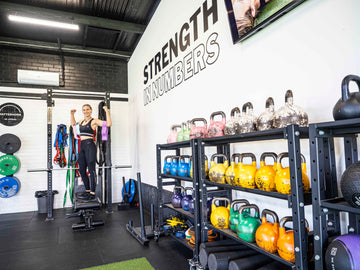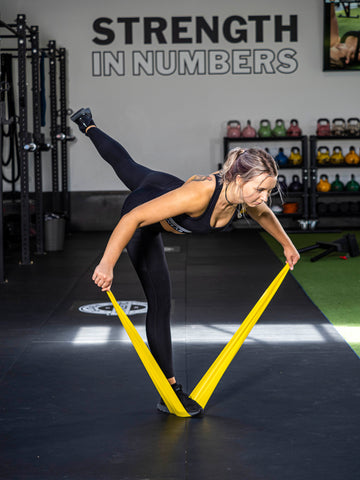Resistance bands are a popular exercise tool, and with good reasons, too. Unlike dumbbells, these colourful, lightweight bands are easily transported, whether you're travelling or doing a full-body workout at home. And they pack a serious punch when it comes to activating your muscles. Researchers have recently discovered that resistance bands provide benefits similar to standard strength training with free weights.
Here’s how they do it:
Better Circulation and Flexibility
Sitting for extended periods can decrease circulation (especially in your legs), which can cause your lower body muscles to tighten up, which can affect your flexibility. Exercise bands can combat this and keep blood flowing to your legs, though not in a way that is distracting enough to perform at work or on an aeroplane.
This exercise should help:
-
Sitting Leg Abductors: Sit up straight on the floor with your legs slightly apart, and wrap a resistance band around your thighs above your knees. Stretch the band by pushing your knees out to the sides as far as possible.
Hold for a few moments, then return to the starting position. Repeat five times.
Core Activation
Adding resistance bands to a core-focused workout like Pilates makes it even more effective! Try this:
-
Easy Core Stretch: Sit in a comfortable, cross-legged position on the floor. Sit up straight with your shoulders pulled back. Extend a resistance band above your head and visualise opening your abs to pull it apart. Focus on engaging your lower and upper abs to brace your rib cage as you open your hands. Hold for five seconds, return to the start and repeat for ten reps.
Injury Rehabilitation
This is especially true for the shoulders, regarded as one of the most complex joints in the body, and even a minor injury can linger for a long time. When trying to rehabilitate a shoulder injury, one of the best ways is with resistance bands. These tools are safer than free weights, as they restrict your range of motion, which prevents overuse and encourages proper posture.
A rehab workout you can do is:
-
External Rotations: Secure one end of a resistance band to an anchor point at your chest. Wrap the other end around one hand and grasp it securely. Use your free hand to place a rolled towel between your body and upper arm to limit its movement.
Move your arm straight out to the side, bending at the elbow to make the arms point outwards towards your anchor point. Then take a step sideways to create resistance as you hold the position for ten seconds. Repeat on the other side.
Muscle Stretching
Lower back pain, muscle soreness and walking imbalances are expected consequences of tight hip flexors since we tend to sit at a desk for hours each day. To keep hip flexors healthy and open, try this:
-
Easy Hip Flexor Lunge: Anchor a resistance band around a sturdy object like a heavy table. Wrap the band around one of your thighs and step that leg behind you, so your back heel is off the floor and pointing behind you. You will feel the tension in the band as it pulls on your bent leg.
Hold this pose for a few seconds, then return to the starting position. Repeat the movement four more times and then switch legs.
Conclusion
Resistance bands are both convenient and versatile and help target muscles for specific goals in various ways. This tool can be upgraded with some purpose-built tools to take training to the next level, so it’s essential to shop for the right ones the next time you’re out.
Don’t just get some branded resistance bands out on the market. Make them POWERBANDS®! Our mission is to improve the quality of our customers' lives through movement. Around here, we won’t settle for anything less than the finest power bands ever manufactured. Our products go the distance and are always ready for your next session. Check out our online collection now!








